Easy, classic, baked presentation for most any filet of fish. Fish en Papillote – or Fish in Parchment Paper, is a simply wonderful, flavorful way to enjoy seafood.
I long for the days when Fish en Papillote – with Cod, Snapper, Sole, Flounder and even Salmon, were regular guests on restaurant menus. While it may have fallen out of style stateside, Fish en Papillote and Seafood al Cartoccio are alive and well on menus in other parts of the world. Call me nostalgic.
The preparation is far easier than the name might lead you to believe, and the possible variations are near endless. Grab some parchment paper or aluminum foil, a fresh cut of fish, and your imagination. Dinner is going to be good!
The two most challenging tasks when making Fish en Papillote are folding the paper and deciding what to put in the pouch. The folding can be done slowly and methodically for presentation purposes, or as pictured here – a little more “down and dirty” just to get the job done. In reality – you’re only trying to create a seal so the food will steam.
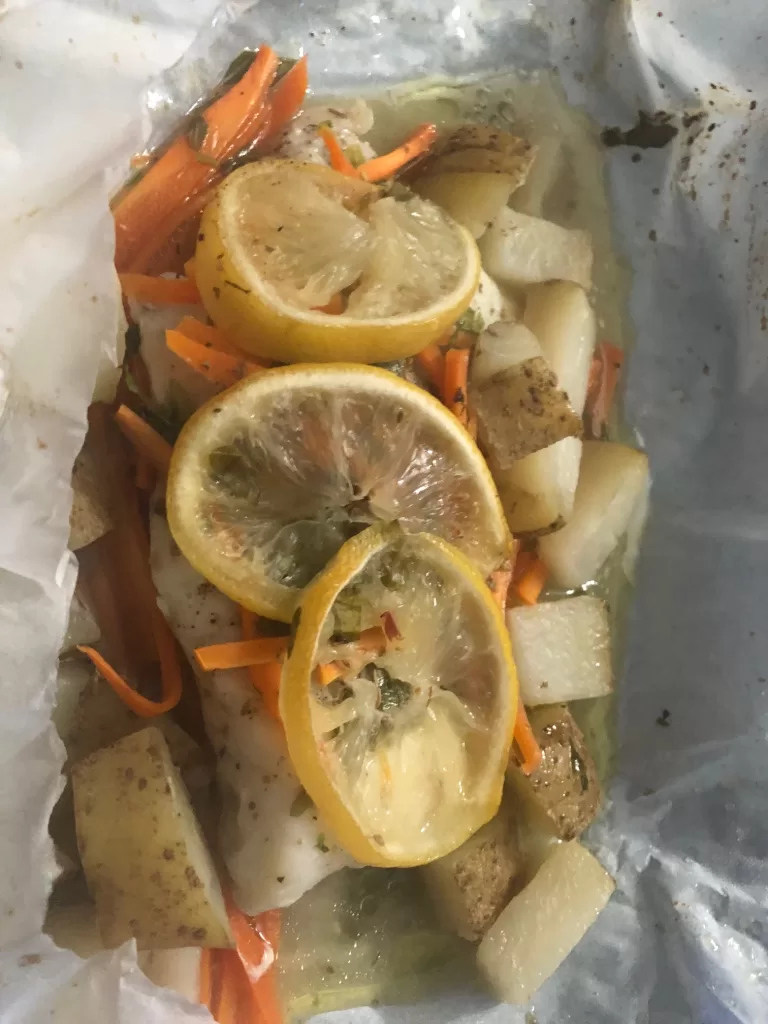
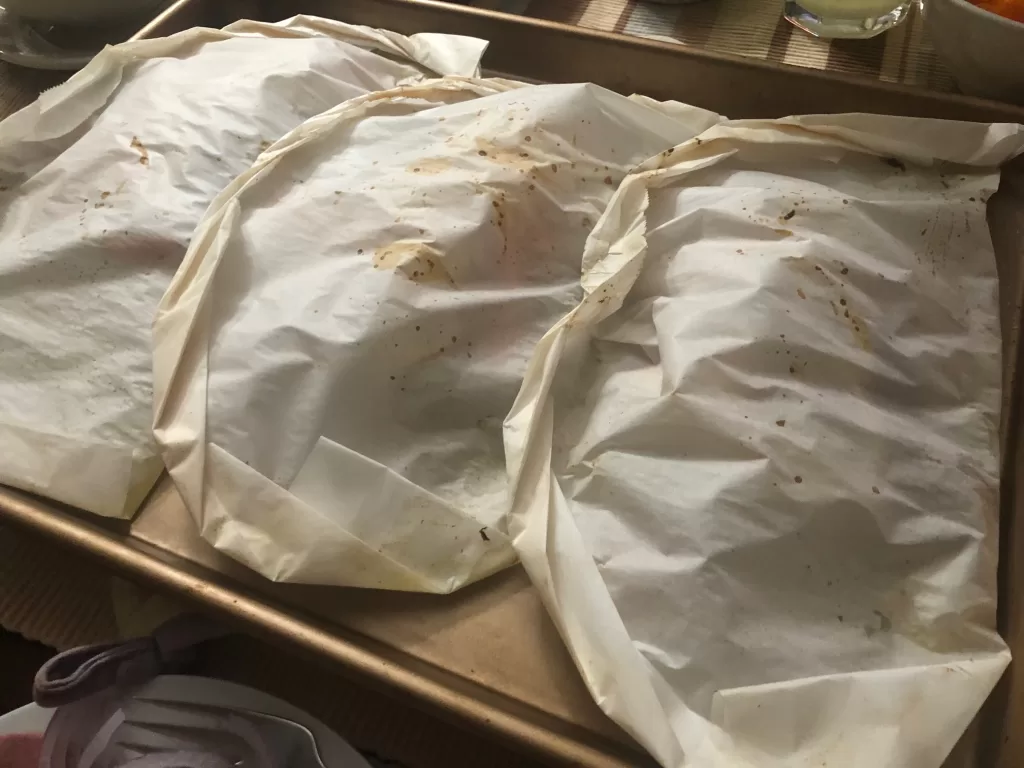
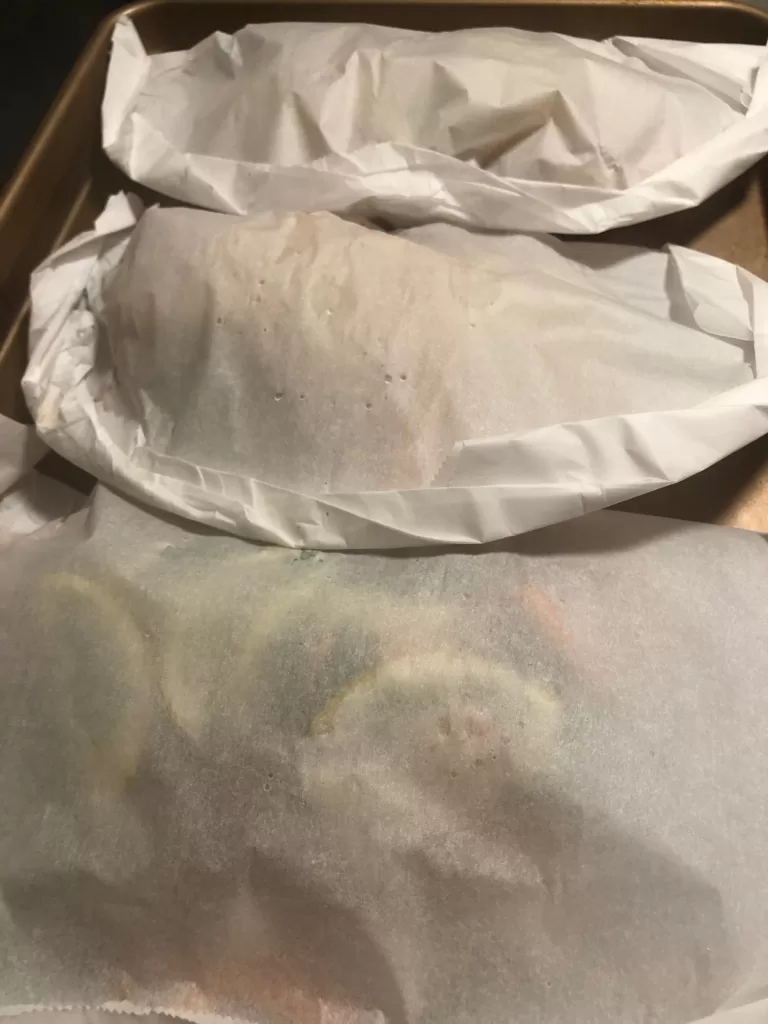
If these were being prepared for plated presentation, more care would have been taken when folding them. As it turns out – it was New Years Eve and we were hungry.
When it comes to opening cooked Fish en Papillote – I am a fan of using scissors or kitchen shears to open the top and fold it back. The bottom of the pouches are full of great tasting liquid – so we don’t want to lose it by tearing the paper and having it run out.
As far as baking temperature – I’m a fan of the slower, lower temperature. Anywhere from 400 to 425 (conventional) should be fine. The fish is generally tender at either temperature, but the texture can change at higher temps. There is less chance of overdoing it at the lower temperature – and the vegetables tend to benefit from the longer cook times as they need a chance to steam. Cut the vegetables too thick, and by the time they are done – the fish is overdone – so it’s a balancing act.
Vegetable additions should be thinly sliced. Potatoes should be par-boiled or steamed ahead of time, chilled, then added to the pouch before sealing. Peas, carrots and potatoes are some of my favorite additions. Summer squash and zucchini, peppers, shallots, fennel and other veggies make good additions too.
Research, read recipes, experiment with various flavor combinations. It’s hard to make mistakes with this dish. Once assembled – it’s pretty much “fire and forget”. You can have confidence that the contents inside will be aromatic, moist and tender and a total joy to eat.
Follow this link for a simple Mediterranean-Style, alcohol free Fish in Parchment Paper recipe.
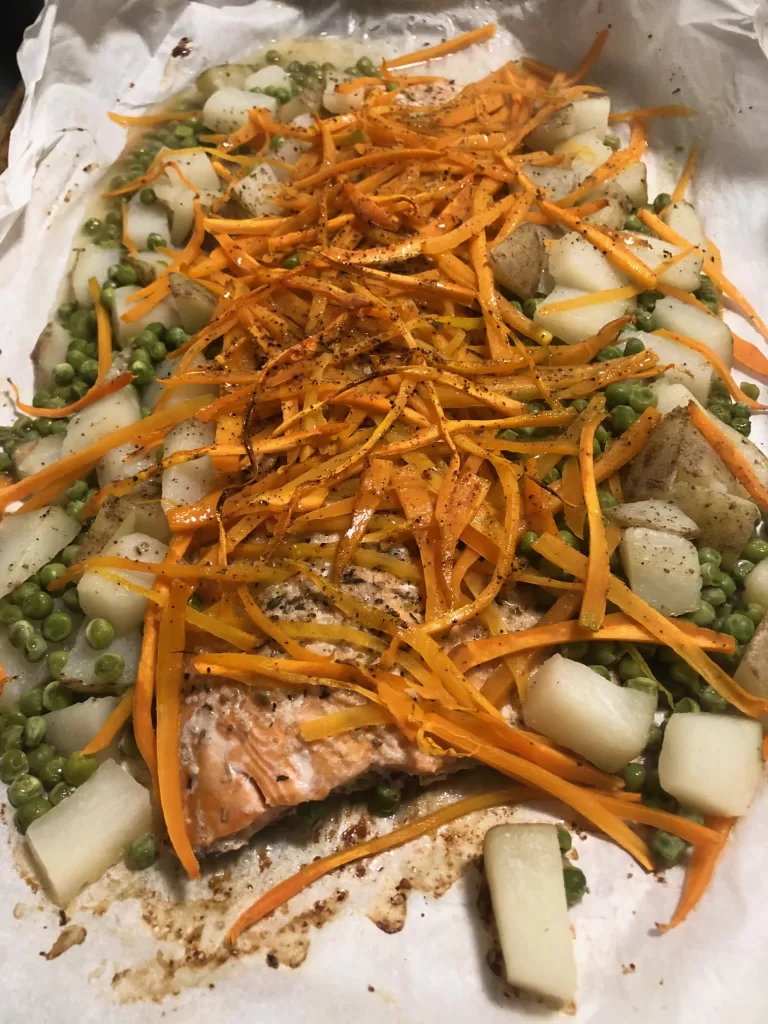
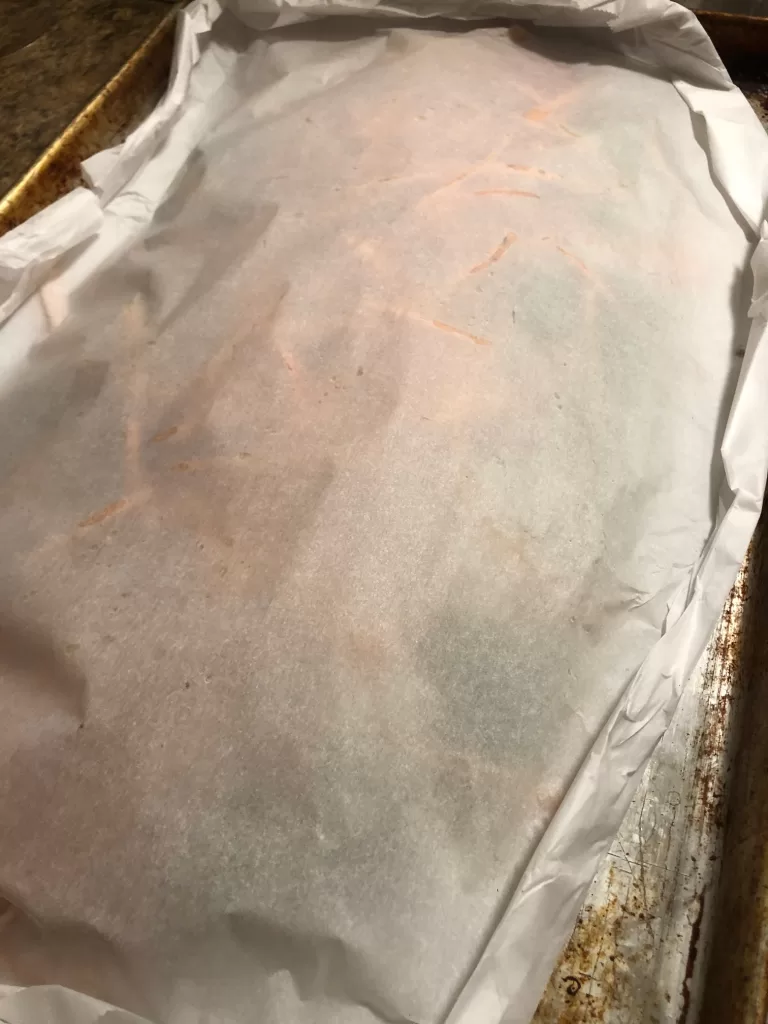
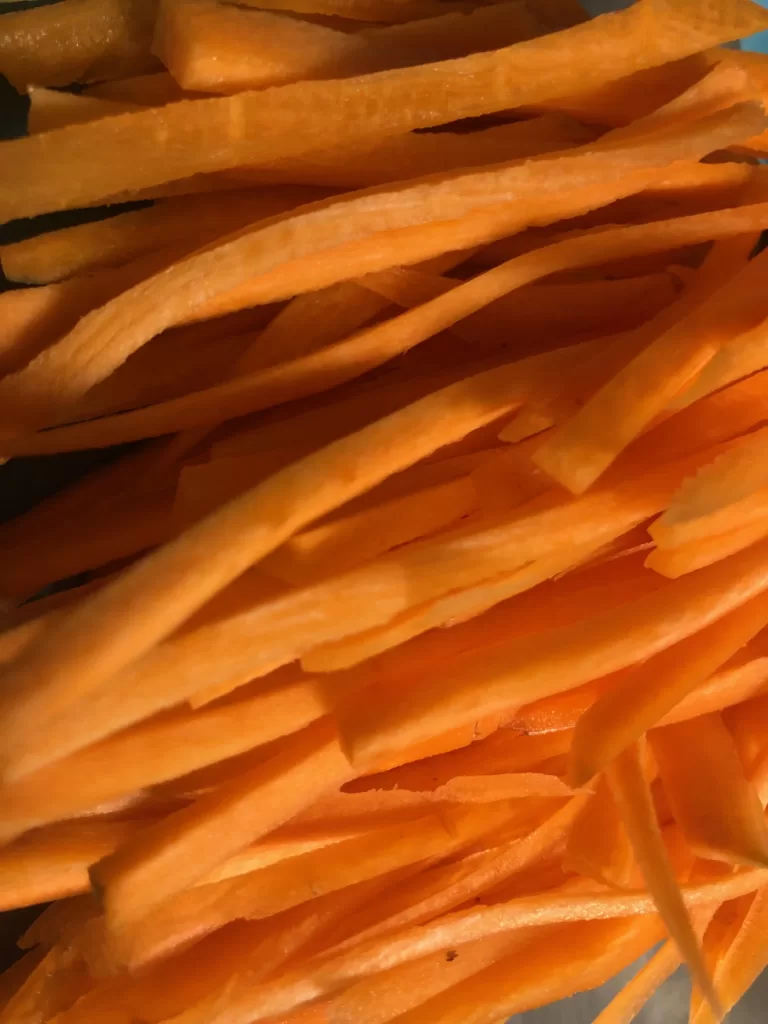
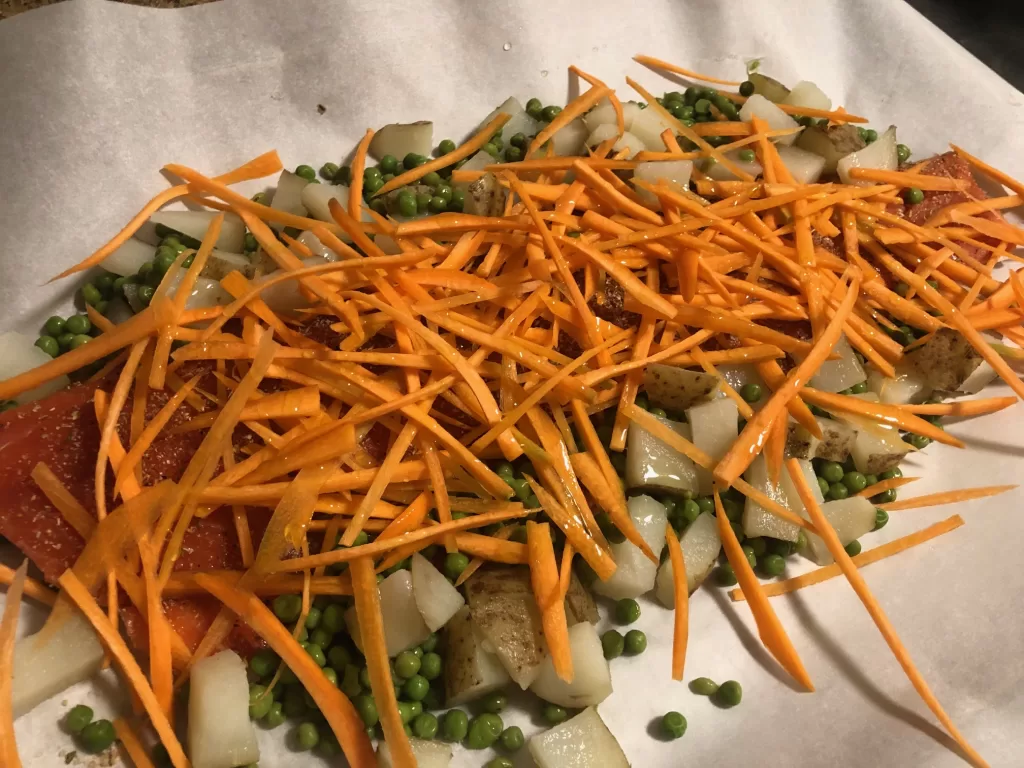
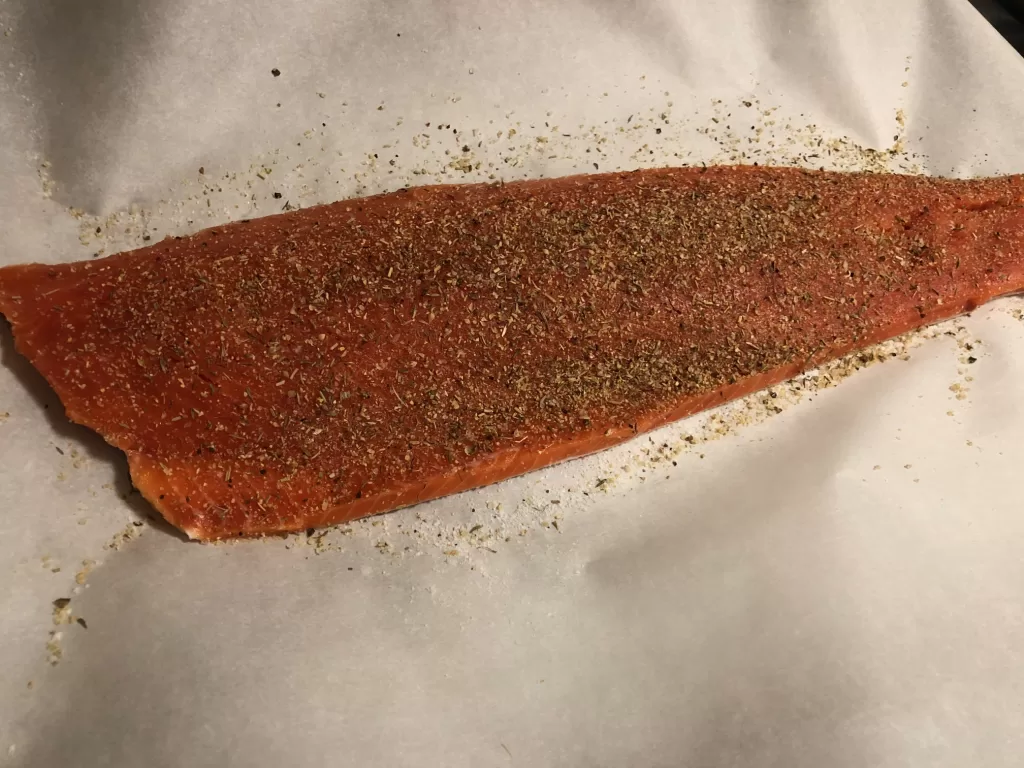
As far as salt, fat, acid and herbs – don’t hesitate to season the fish well. A quality non-iodized salt, or sea salt is all you need. Certainly don’t leave it out unless you have issues with additional sodium. I can see some of the Mrs. Dash’s “No-Sodium” seasoning combinations holding up well with Fish en Papillote, though I’ve never tried. In my mind – it makes perfect sense for salt-free or low sodium preparations.
For acid, you can’t go wrong with lemon or white wine, though a very light fruit vinegar would be nice with compotes, grapes and raisins.
As to which wine, I prefer a very light, dry Pinot Grigio. A decent Sauvignon Blanc will also work. I’d avoid the temptation to use Chardonnay – but if you must – stick with the lighter, more dry, steel-barrel variety. 1oz to 1.5 ounces per pouch should do the trick. Maybe 2-2.5 ounces for full fillets and whole fish. I tend not to add wine when I use salmon.
Take a look here for some ideas on wines to use when cooking seafood and fish.
For the fats to use – you can’t go wrong with olive oil – (EVOO) and butter. I could however be tempted to use some bacon fat and maple syrup for a decent piece of salmon. The trick really – is to have a sauce develop in the packet. Vegetables certainly help with that.
For seasoning, fresh chopped herbs are always going to be better than dried. Dry seasonings have a tendency to be too intense, and overpower the flavor of the fish. Think thyme, rosemary, parsley, tarragon for the adventurous, chives, chervil and fresh oregano.
I have to reveal a family secret here though – one of my go-to favorite seasonings for fish is actually McCormick’s Montreal Chicken seasoning. Butter, wine, fish and a moderate amount of this seasoning hits my happy spot far more often than my dried herbes de provence, which only seems to really work with Summer Corn and Tomatoes.
With whole fish – which are great for family-style and buffet presentations, the cook times get longer, and they become more challenging to fold and seal. Otherwise the process is very much the same. With the bones, you’re going to need a fairly agreeable audience that is used to eating whole fish, or you’ll have to break it down for service and clean the bones out. Maybe not the best presentation when there are kids around.
All over the shores of the Aegean and Mediterranean regions, fish is served like this. People accustomed to eating fish this way seem to navigate the bones without issue, and for an extra fee, servers will actually break them down table-side for you. It really is the best way to enjoy large, freshly caught fish. The pictures don’t show it very well, but this snapper was near 3lbs when purchased whole.
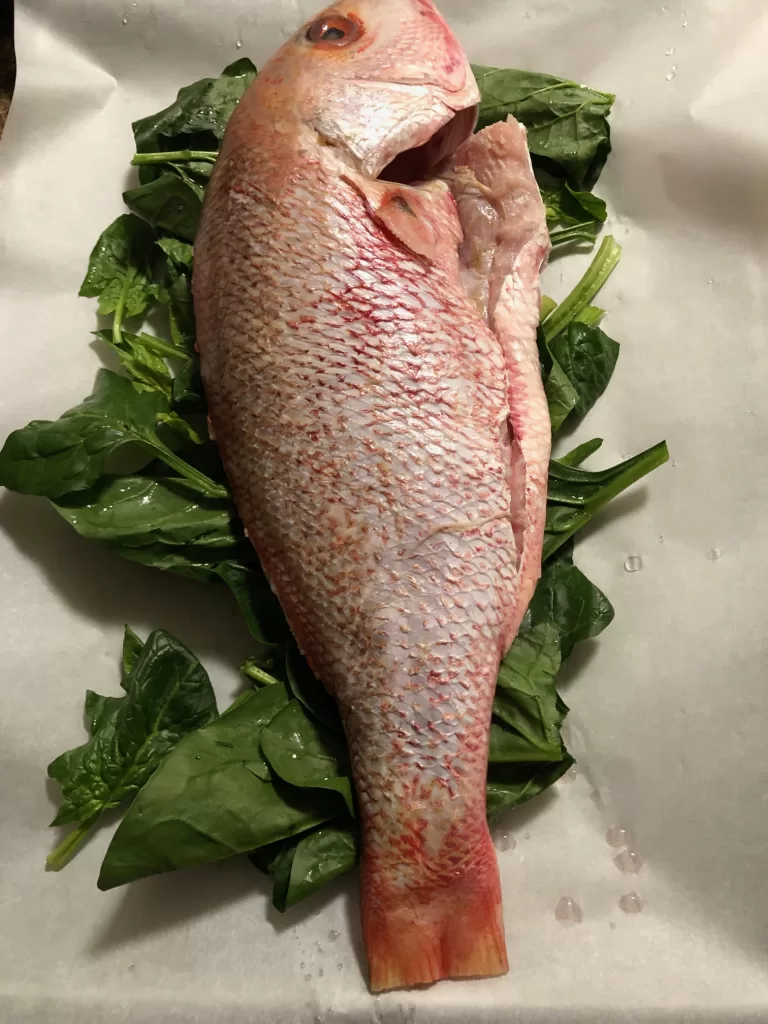
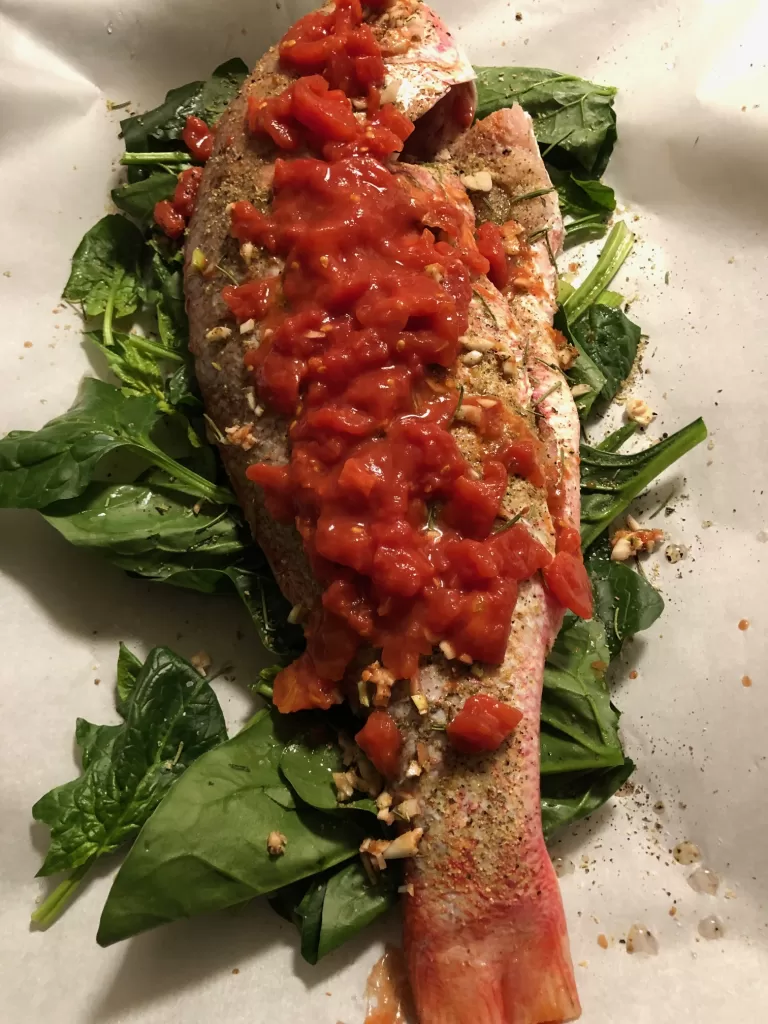
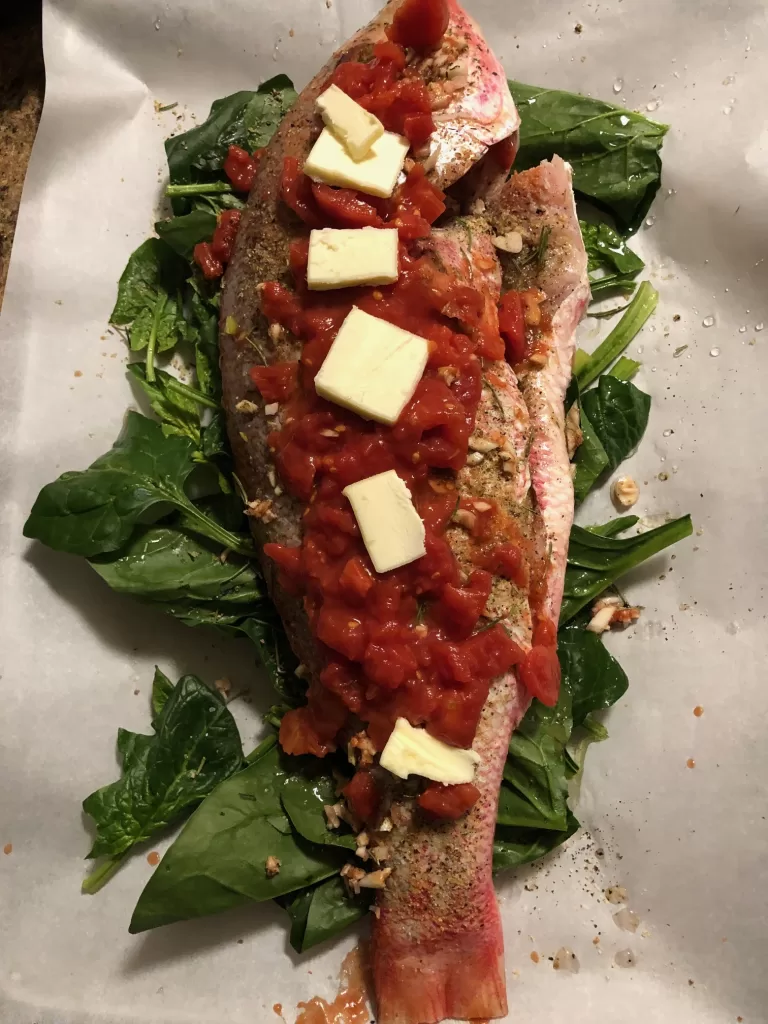
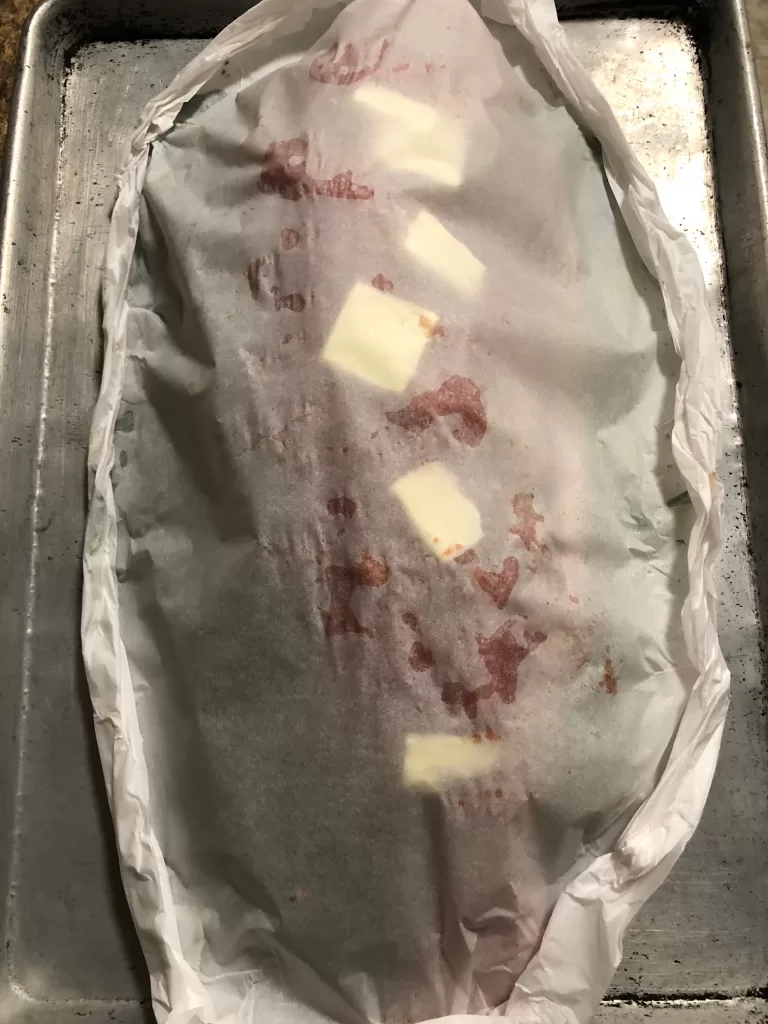
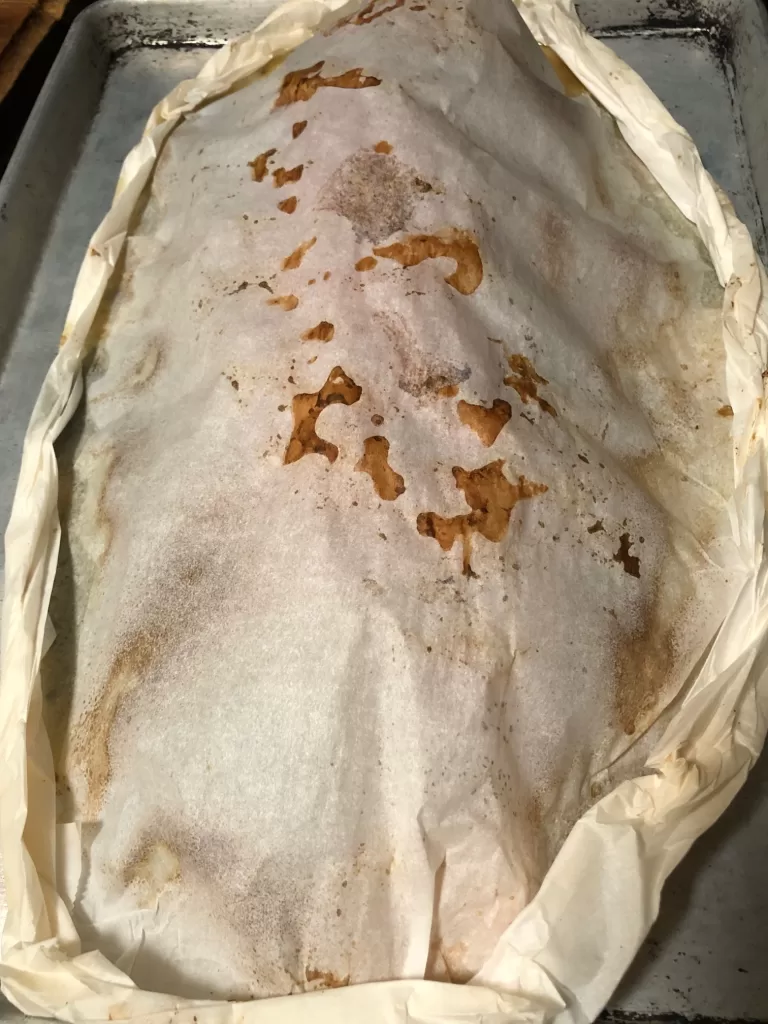
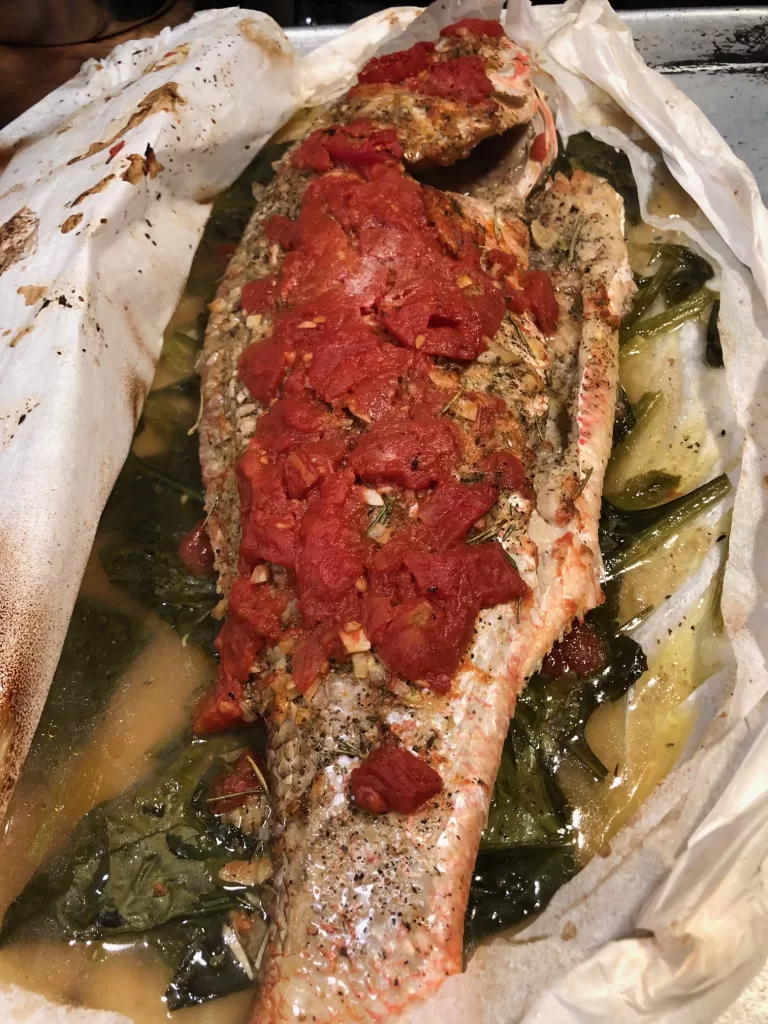
The spinach in this dish added quite a bit of broth, and blended well with the butter, herbs and wine. It was hard to not eat the whole thing!
After experimenting with Fish en Papillote – your next move should be looking into Seafood al Cartoccio, Linguini al Cartoccio, and Frutti de Mare al Cartoccio, similar in presentation, though worlds apart. They’re usually wrapped in foil and baked, and contain more shellfish, mollusks and calamari. They are equally as divine at times, and something you should seriously consider adding to your culinary repertoire.
Continue your adventure to learn more about Seafood al Cartoccio presentations.
All the best,
-The Chef
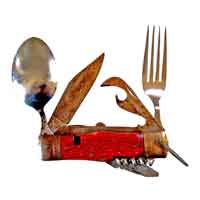
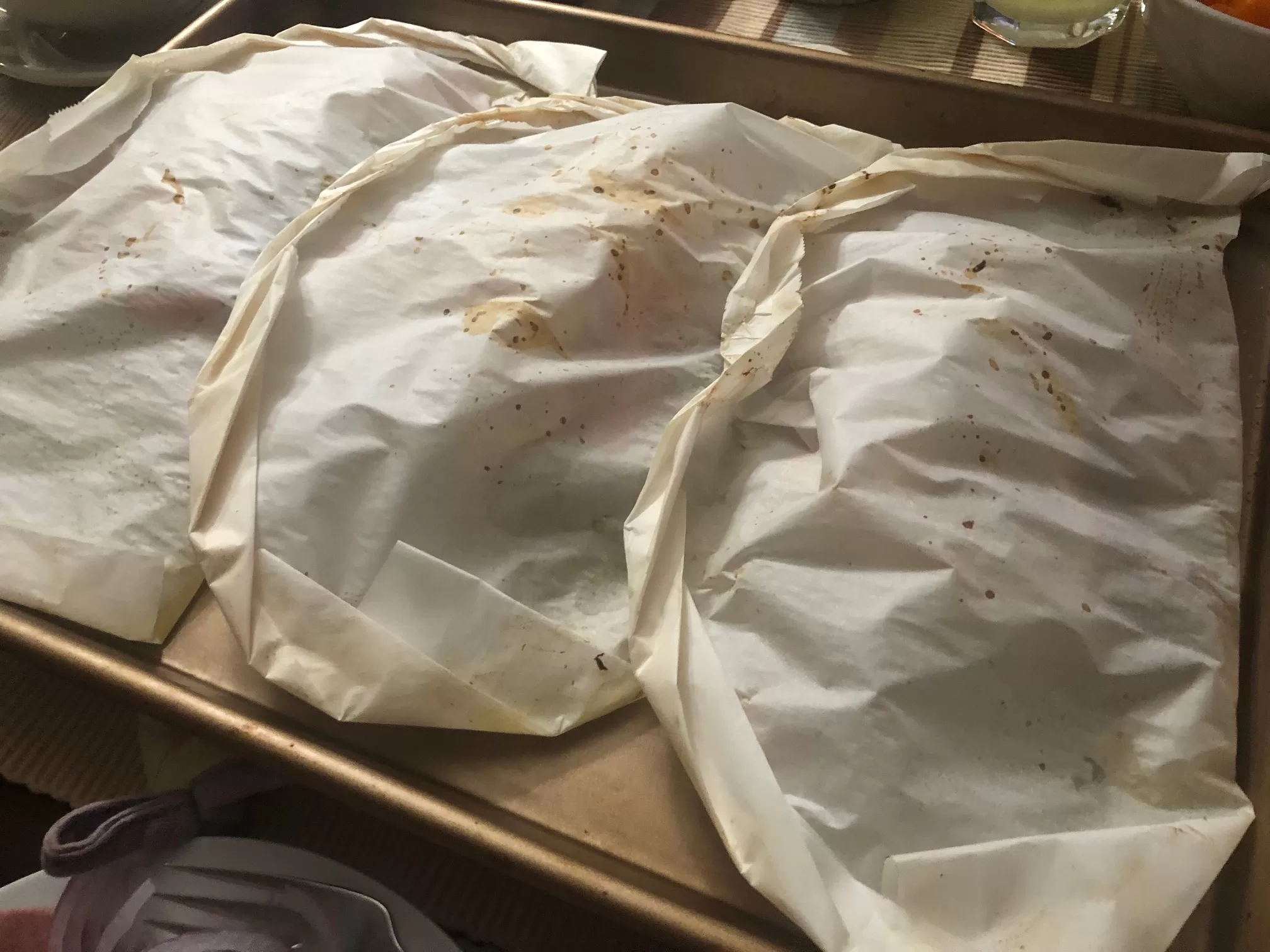
Leave a Reply